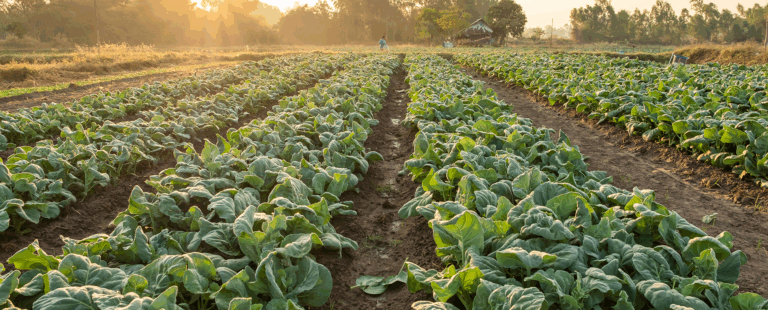The Wholistic Approach to Balance Blood Glucose Levels
One can hardly get through the day without seeing an ad for medications that manage blood sugar levels. These ads are so ubiquitous that the brand names are becoming topics of social conversation. We shouldn’t be surprised to see this type of interest due to the ever-growing concern with mismanaged glucose in the U.S. But how did we get to this point where many are actively seeking how to balance blood glucose levels, and where can we intervene to stem the tide?
| According to the CDC, the incidence of diagnosed diabetes in the U.S. has doubled since the year 2000 and affects more than 11.6% of the population. |
90-95% of those cases are Type 2 Diabetes(T2D), where insulin production by the pancreas cannot keep up with the demand. This results in a rise in blood glucose levels that can be at the root of several risk factors for all-cause mortality1. But the road to T2D can be a long one, with plenty of opportunity to intervene in this and other health conditions if the warning signs are recognized.
The warning signs for T2D are sometimes treated as stand-alone conditions. Central obesity, dyslipidemia, hypertension, and fasting blood glucose can each have their own etiology and be treated separately. But if viewed wholistically, as a constellation of symptoms rooted in mismanaged glucose, the picture becomes clearer, and healthy diet and lifestyle interventions can be implemented.
The Role of Diet and Lifestyle in Reducing the Risk of Diabetes
The standard American diet (SAD) plays a role in increasing predisposition to obesity and diabetes risk, and it comes down to a few different mechanisms.
How Blood Sugar Responses Correlate with Diet
Human studies have found Americans are consuming less than the recommended intake of fruits and vegetables. 39% of vegetable intake comes from potatoes (think fries and chips), and tomatoes (think pizza and pasta), and 33% of fruit intake is from fruit juice. We’re also consuming well above the recommended intake of refined grains and added sugar, impacting our digestive health.2
Overall, this type of diet is high in foods that raise blood sugar, requiring increased output of insulin, and over time, a decreased response to insulin (insulin resistance). Insulin resistance occurs when the pancreas struggles to produce enough insulin to compensate for the decreased response, which leads to elevated blood sugar levels.

The Importance of Balanced Meals and Nutrients
There is a lack of whole, plant foods in the American diet. Plant foods are a source of chemicals known as phytonutrients which have been associated with slowing down the release and absorption of glucose after a meal and have been linked with helping prevent insulin resistance and T2D.3
Portion Control and Avoiding Excess Sugar
The average American is overeating, snacking, and consuming sugary drinks throughout the day, leaving them in a post-meal state most of the day with the associated increase in blood glucose levels and insulin. This leads to increased hunger, increased food intake, and overeating, and the cycle continues.
Putting it All Together to Maintain Healthy Blood Sugar Levels
All of the aforementioned factors impact the current state of the epidemic of chronic diseases in Western countries.4 Data shows that adopting a SAD-style diet, rich in refined grains and processed meats, but low in fruit and vegetables, may increase the risk of diabetes, especially in genetically high-risk populations. Consequently, obesity and poor-quality diet are contributing to one of the first drops in expected lifespan in recent history.4,5
The good news is that even small changes in dietary habits can have a big impact. Next, we’ll explore a few dietary changes that can help improve blood glucose levels.

Protein
Protein is important for multiple functions in the body, but it’s been shown that high-protein diets improve satiety, lower blood glucose after a meal, improve overall glucose control, and help maintain muscle mass.6,7 And muscle is responsible for 75% of glucose uptake in the body.
Fiber & Resistant Starch
Fiber is another dietary component that is under-consumed by Americans, and it also is tied to healthy blood sugar control. Dietary fiber passes through the gastrointestinal tract undigested and unabsorbed, exerting its influence by adding bulk to the stool (insoluble fiber) and forming a viscous gel (soluble fiber). Both types of fiber have been strongly correlated with reducing the risk of T2D, but soluble fiber plays more of a role in improving post-meal glucose response 8-10.
Resistant starch is a type of starch with fiber-like qualities. It can slow the digestion rate, resulting in a slower and more sustained release of glucose into the bloodstream. It’s also associated with increases in fat burning after a meal12. Resistant starch is higher in foods like beans, peas, and lentils, and one less common ingredient is green banana flour.
Other types of starches can also help control and balance blood glucose levels. Waxy maize and other waxy starches are high in amylopectin. Amylopectin is a highly branched chain of glucose molecules that are tightly packed together. This feature of amylopectin results in “inside-out digestion”, where glucose is first released from the inside of the molecule, progressing to the outside of the molecule, slowing the absorption13.
If you combine these types of starches with the rare sugar known as allulose, the effect on blood glucose levels may be minimized even further. Allulose occurs in a small subset of plants, but it doesn’t have a significant effect on blood sugar.14 In addition, it’s been shown to suppress the glycemic response of other carbohydrates that are consumed at the same time.15
Ancient Oats
Oats have long been studied for their possible effect on lowering the risk of T2D, and the cardiovascular effects that come with it. Unfortunately, the evidence is conflicting, in part because oat varieties differ in their levels of health-promoting components.
Ancient oats are a unique strain of oats derived from a pre-modern breeding oat species. It is a much smaller groat, higher in protein, total fiber, and several vitamins, and minerals; and it is lower in carbohydrates. It also contains higher levels of avenanthramides, a specific plant nutrient with strong antioxidant and anti-inflammatory effects. This variety of oats has less of an impact on blood sugar than common oats, but you’re more likely to find them as an ingredient in a supplement than in your local supermarket.
The road toward T2D has many exit points and opportunities for U-turns. Small changes and swap-outs for foods with higher satiety and lower impact on blood glucose can go a long way toward mapping a new route to improve overall health and balance blood glucose levels.
Did you know Wholistic Matters is powered by Standard Process? Learn more and where to buy.
- Danaei G, Ding EL, Mozaffarian D, Taylor B, Rehm J, Murray CJ, Ezzati M. The preventable causes of death in the United States: comparative risk assessment of dietary, lifestyle, and metabolic risk factors. PLoS Med. 2009 Apr 28;6(4):e1000058. doi: 10.1371/journal.pmed.1000058. Epub 2009 Apr 28. Erratum in: PLoS Med. 2011 Jan;8(1). doi: 10.1371/annotation/0ef47acd-9dcc-4296-a897-872d182cde57. PMID: 19399161; PMCID: PMC2667673.
- S. Department of Health and Human Services and U.S. Department of Agriculture. 2015 – 2020 Dietary Guidelines for Americans. 8th Edition. December 2015. Available at https://health.gov/dietaryguidelines/2015/guidelines/.
- Kim Y, Keogh JB, Clifton PM. Polyphenols and Glycemic Control. Nutrients. 2016 Jan 5;8(1):17. doi: 10.3390/nu8010017. PMID: 26742071; PMCID: PMC4728631.
- Carrera-Bastros P, Fontes, O’Keefe J, Lindeberg S, Cordain L. The western diet and lifestyle and diseases of civilization. Research Reports in Clinical Cardiology. 2011 Mar 8. doi: 10.2147/RRCC.S16919
- Ludwig DS. Lifespan Weighed Down by Diet. JAMA. 2016 Jun 7;315(21):2269-70. doi: 10.1001/jama.2016.3829. PMID: 27043490.
- Gannon MC, Nuttall FQ, Saeed A, Jordan K, Hoover H. An increase in dietary protein improves the blood glucose response in persons with type 2 diabetes. Am J Clin Nutr. 2003;78(4):734-741. doi:10.1093/ajcn/78.4.734
- Beaudry, KM, Devries, MC. Nutritional Strategies to Combat Type 2 Diabetes in Aging Adults: The Importance of Protein. Frontiers. 2019, https://doi.org/10.3389/fnut.2019.00138
- Mao, T, Huang, F, Zhu, X, Wei, D, Chen, L. Effects of dietary fiber on glycemic control and insulin sensitivity in patients with type 2 diabetes: a systematic review and meta-analysis. J Funct Foods 2021;82:104500. https://doi.org/10.1016/j.jff.2021.104500
- Weickert MO, Pfeiffer AF. Metabolic effects of dietary fiber consumption and prevention of diabetes. J Nutr. 2008 Mar;138(3):439-42. doi: 10.1093/jn/138.3.439. PMID: 18287346.
- Jenkins DJ, Wolever TM, Leeds AR, et al. Dietary fibres, fibre analogues, and glucose tolerance: importance of viscosity. Br Med J. 1978;1(6124):1392-1394. doi:10.1136/bmj.1.6124.1392
- Robertson, M.D., Currie, J.M., Morgan, L.M. et al. Prior short-term consumption of resistant starch enhances postprandial insulin sensitivity in healthy subjects. Diabetologia 46, 659–665 (2003). https://doi.org/10.1007/s00125-003-1081-0
- Higgins JA, Higbee DR, Donahoo WT, Brown IL, Bell ML, Bessesen DH (2004). Resistant starch consumption promote lipid oxidation. Nutr Metab 1, 8
- Sands AL, Leidy HJ, Hamaker BR, Maguire P, Campbell WW. Consumption of the slow-digesting waxy maize starch leads to blunted plasma glucose and insulin response but does not influence energy expenditure or appetite in humans. Nutr Res. 2009 Jun;29(6):383-90. doi: 10.1016/j.nutres.2009.05.009. PMID: 19628104; PMCID: PMC4562027.
- Yuma T, Tokuda M, Nishimoto N, Yokoi H, Izumori K. Allulose for the attenuation of postprandial blood glucose levels in healthy humans: A systematic review and meta-analysis. PLoS One. 2023 Apr 6;18(4):e0281150. doi: 10.1371/journal.pone.0281150. PMID: 37023000; PMCID: PMC10079081.
- Jenkins A, Au-Yeung F, Prancevic S, Campbell J, Vissers E, Wolever T. Comparison of Postprandial Glycemic and Insulinemic Response of allSWEET®, Non-GMO Allulose, Consumed Alone or When Consumed with Sucrose: a Randomized, Controlled Trial. Curr Dev Nutr. 2022 Jun 14;6(Suppl 1):445. doi: 10.1093/cdn/nzac057.011. PMCID: PMC9193293.







